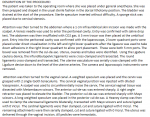ltingle1
Networker
Hello,
We have a Dr. that performs hysterectomies using the laparoscope for all portions of the surgery, except that she closes from below, vaginally. Would that make the hysterectomy an LAVH, or can it still be considered a TLH since she severs upper and lower connections through scope, as well as circumscribes the cervix from above to release the organ and pulls it through the vaginal canal? Thanks in advance for any help!
We have a Dr. that performs hysterectomies using the laparoscope for all portions of the surgery, except that she closes from below, vaginally. Would that make the hysterectomy an LAVH, or can it still be considered a TLH since she severs upper and lower connections through scope, as well as circumscribes the cervix from above to release the organ and pulls it through the vaginal canal? Thanks in advance for any help!
